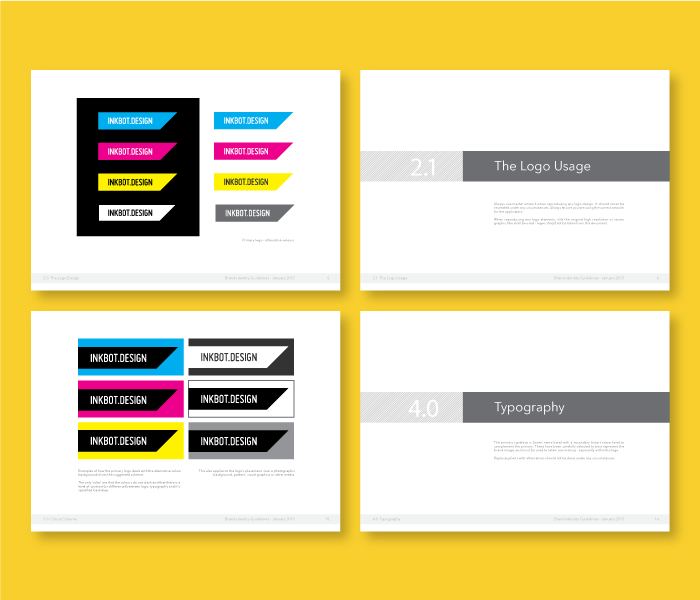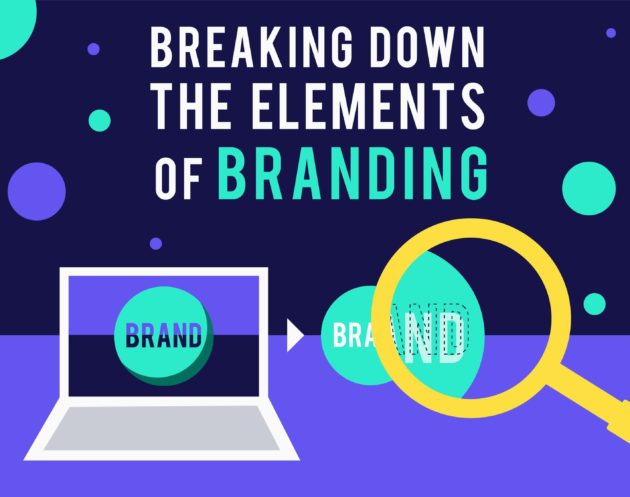Brand guidelines are a set of rules and suggestions that will help you be consistent in presenting your brand.
Brand guideline document is also known as ‘style guide’, ‘brand standards’, ‘brand book’, etc.
In essence, most of these terms refer to the same thing.
When done correctly, your brand book will contain everything about your brand in one place. It will include vital information on your logo, brand colors, typography, complementary shapes, etc.
It would be best if you were referring back to this document every time you create new content, marketing material, or anything that represents your brand.
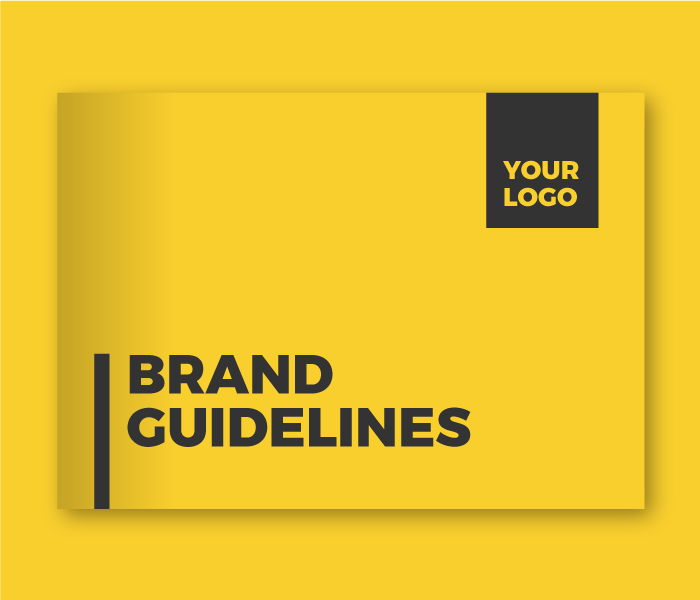
Purpose of Brand Guidelines
Does every company need a brand guide, regardless of its size, industry, or marketing budget?
The answer is simple and straightforward, YES!
Very soon, it will be pretty much impossible for a business to operate and thrive without a strong brand presence. What is even harder is to build that brand without a clear strategy and consistency.
Your brand book will give you exactly that. It will help you maintain your companies identity, values, and keep track of how you present yourself.
At the same time, it will give you some much-needed flexibility.
You don’t have to use the same logo, colors, and shapes in every single element.
Designers do need creative freedom, but that creativity still needs guidance and a clear direction. An experienced designer should take one look and be able to create new materials that are still in line with your brand.
It doesn’t matter if the project is an update of your current logo, a new brochure, a pitch deck, or a new website.
Just make sure that it doesn’t get too technical, or even boring. Anyone should be able to understand your brand just by reading the document once.
Time invested in creating it now will save you a lot of time down the line.
How well, and how often you will use it will be up to you.
Keep in mind that you should treat it as one of the precious assets in your company or business.
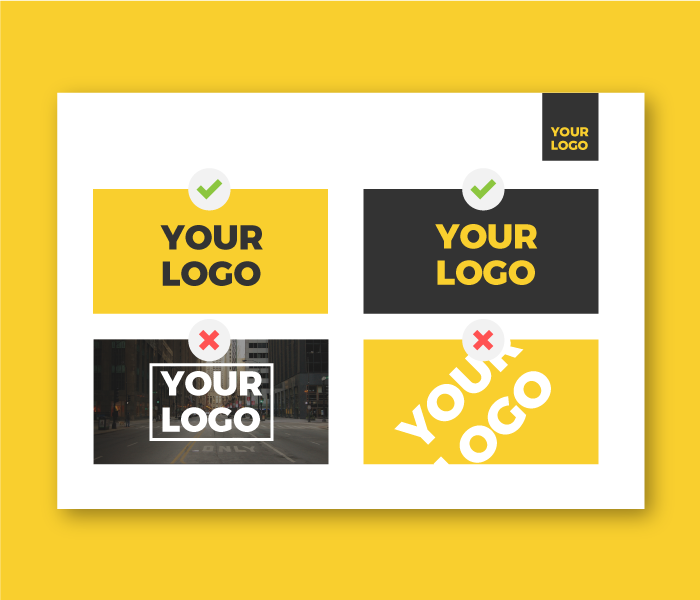
What to include in the Brand Guide Document?
Like many other questions in life and business, there is no single answer to this question.
Your company can ‘make do’ with a two-page document, or it can go to 60 pages.
The important thing is that it incorporates all or most of the essential elements.
Before we go into what content to include, you need to establish the following:
- Company Values:
The fundamental principles that guide the decisions you make as a company. How do you interact with each other and with the world, what guides and motivates you? - Mission:
The reason your business exists. What problem are you solving, and what are you looking to accomplish in the future? - Voice of the Company:
What are the adjectives that first come to mind when people think of your company?
Do others see you as trustworthy, formal, and stoic? Or, if you would like to see perceived as fun and carefree company? Your company voice should be aligned with your industry. Don’t compromise on your uniqueness and identity. Still, you wouldn’t want your insurance company to be seen as casual. At the same time, you probably wouldn’t like for your Software company to be perceived as old-fashioned. - Target Audience or Customer
Get to know your users and customers. What is their age, education, financial status, etc.?
This will help you provide superior service, align, and adjust your brand if needed.
Essential content to include in your brand guideline document:
Logo Design:
Here is where you will present your primary logo, variations of the logo(color, shapes, layout), alternate styles or types of the logo, etc.
Explain in detail where each of the variations should be used.
For example, how to use a horizontal logo for the website header, logo icon for favicon or profile picture, etc.
Colors:
Here you should list your primary and secondary brand color pallets.
Primary colors are most often used on your logo.
Secondary colors expand on that and give you more options to use for your website, flyers, uniforms, and so on.
It’s never a bad idea to include CMYK, RGB, and Hex codes, so the colors stay consistent on print and digital items.
Typography
List the exact fonts or font families your brand use.
This particular list of brand typography should include fonts to be used for your logo, Headlines and sub-Headlines, Paragraphs and
Social Media.
Also, list the font family, or fonts that are similar to your main.
This way you can use them as a substitute in case your main font isn’t available for some reason.
Images
This section usually includes photographs and illustrations connected to your brand. The images can be the ones that inspire you, mascots, or illustrations created previously, pictures of the staff, etc.
The primary purpose is to set a tone, light, and colors. Every new photographer and designer that you work with will find this section particularly valuable.
Stationery Designs
Business cards and letterheads may seem a bit outdated and unnecessary in some industries (tech industry in particular).
However, most companies still use them regularly, especially in more conservative industries.
Arguably, each company should have the designs ready just in case.
Make sure you keep them updated for each vital member of the staff, and ready to be printed at the moments notice.
Social Media Assets
The popularity of social media allowed companies to communicate with their users and customers directly.
A strong social media presence is essential to keep up with the market.
Organize all of your assets like banners, profile pictures, and post templates.
Make sure every post follows the general Voice and appearance of your brand.
Other Assets
Here is where you will keep and organize designs, layouts, and rules that don’t exactly fall into any of the previous categories.
These can be website layouts, product images, illustrations, mascots, uniform designs, etc.
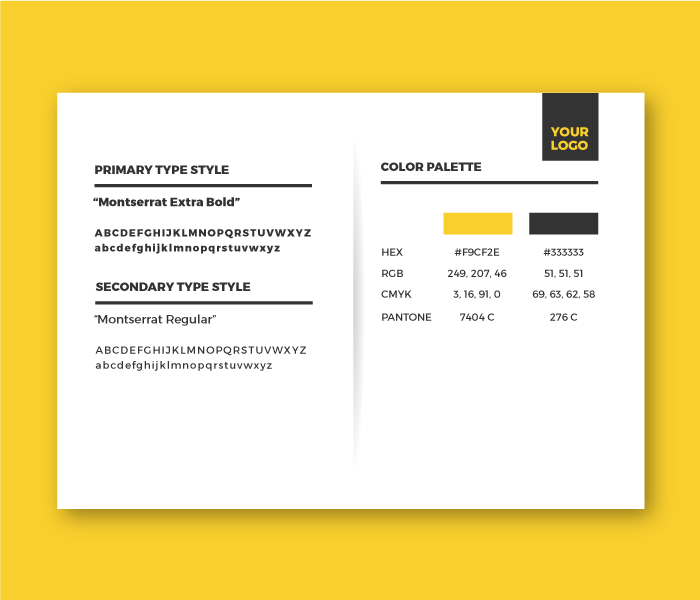
Brand Guideline Templates
We went through essentials and elements of a useful, well-made brand guideline document.
It’s easy to do in theory, but where do you actually start? There is nothing more frustrating than staring at a blank screen or page.
Furthermore, you can lose hours stuck on one problem that you are not sure how to solve.
Luckily, there are free templates available to help you get started.
They will significantly speed up the process, and at least provide a general structure to your document.
If you are a designer, you can use it as a base for most of the brand guides you design for your customers.
Here is a link to one of our favorites:
https://inkbotdesign.com/free-brand-guidelines-template/
